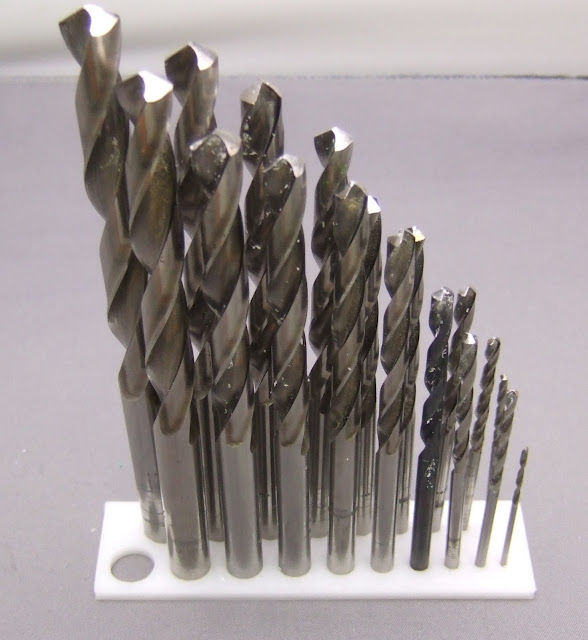After eliminating lots of other sources of unreliability in my machines, electrical connection failures are now the most common failure mode.
The latest failure on my Mendel was that it started leaving a 10mm gap in the outline rectangle that it draws around the objects. Since a bed full of objects still seemed to build OK I decided perhaps it was due to an air bubble in the extruder while it was warming up. However, one time I saw the extruder motor stall and realised it was actually a bad connection.
I have come to realise that simple friction fit connectors do not work in the environment of these machines. I tried re-seating the motor plug but that did not fix it, so I figured the cable must be faulty. I wired both coils in series to my multimeter and waggled the cable until it went open circuit. That allowed me to locate the break and it was, as could be expected, at the point where the cable bends the most, i.e. just below the cable clamp on the top right of this picture: -
The latest failure on my Mendel was that it started leaving a 10mm gap in the outline rectangle that it draws around the objects. Since a bed full of objects still seemed to build OK I decided perhaps it was due to an air bubble in the extruder while it was warming up. However, one time I saw the extruder motor stall and realised it was actually a bad connection.
I have come to realise that simple friction fit connectors do not work in the environment of these machines. I tried re-seating the motor plug but that did not fix it, so I figured the cable must be faulty. I wired both coils in series to my multimeter and waggled the cable until it went open circuit. That allowed me to locate the break and it was, as could be expected, at the point where the cable bends the most, i.e. just below the cable clamp on the top right of this picture: -
On reflection this was not a good arrangement as the cable is only just long enough for the extremes of travel, so it is forced to bend sharply both ways at the clamp. After millions of movements the strands break one by one but the insulation holds the ends together making it only lose contact when it is stretched. When I pulled the ends of the wires three of them snapped very easily, indicating most if not all the strands were broken.
I had a similar problem with the mains wire to a heated bed a while ago. In that case the arcing melted the insulation and allowed the live and neutral to short out, blowing a hole in outer sheath of the cable. Not good! Normally you expect a fuse to protect against a cable fire, but if all the strands start breaking, reducing the current capability, or it breaks and arcs, the fuse offers no protection against fire. Even a low voltage heated bed could fail in this way because of the high current.
The XY table of HydraRaptor uses 9 way D-type connectors. These have been totally reliable moving connections because they are screwed together and have gold plated pins and proper strain relief. The professional stepper motor drives on HydraRaptor have screw terminal blocks for their connections, and again they have proved totally reliable. In contrast all the friction fit connectors fail if there is any movement or vibration of the wire. Some even burn out despite being run at well below their current rating. The contact resistance rises and they then start to heat up.
I rewired my Mendel extruder using a 9 way D-type at the extruder and a longer loop of cable. That necessitated resiting the extruder controller and I also replaced all of its 0.1" MTA connectors with screw terminal blocks. The wires could go straight into these but I added ferrules to allow them to be more easily removed and replaced. I just push the wire into the ferrule and then squeeze it with pliers.
I reprapped a bracket to attach the DB9 connector to the back of Wade's extruder bracket.
The pins are four motor connections, two heater, two thermistor and one heatsink fan that shares a 12V feed with the heater.
Here is the new arrangement :-
The cable loop is much longer, so it bends through a much smaller angle. The top end goes through two cable clamps before it goes to the extruder controller. I found that if you put a bunch of wires though a single clamp you can get some movement at the other side of the clamp. Using two eliminates any movement of the wire relative to the board, less critical now I that have screw terminals, but still a good idea.
It should last a lot longer than the previous cable (which lasted for 15 months of continuous use) and can be easily replaced. I have seen people use corrugated tubing to protect the cable, but I didn't fancy adding any more drag on the extruder as it would increase backlash.
Interestingly, although my extruder stepper motor connections have failed several times, I have never damaged the Allegro driver chips.



















































